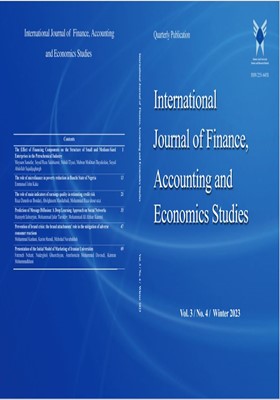Presentation of the Initial Model of Marketing of Iranian Universities
محورهای موضوعی : International Journal of Finance, Accounting and Economics Studies
Fatemeh Nehzat
1
,
Nadergholi Ghoorchian
2
,
Ammirhossein Mohammad davoudi
3
![]() ,
kamran Mohamadkhani
4
,
kamran Mohamadkhani
4
1 - Department of Higher Education, Science and Research Branch, Islamic Azad University, Tehran, Iran
2 - Department of Higher Education, Science and Research Branch, Islamic Azad University, Tehran, Iran
3 - Islamic azad university
4 - Department of Higher Education, Science and Research Branch, Islamic Azad University, Tehran, Iran
کلید واژه: marketing, Educational Support, Marketing of Higher Education Centers,
چکیده مقاله :
Considering that educational systems take a significant share of the budget of each country, it is undeniable to ensure the optimal quality of their performance in order to prevent the wastage of human and material capital and to have the ability to compete in the future world where "marketing" is the most important component for the survival of any organization. So, the researcher decided to model the marketing of Iranian universities. This study is applied in terms of purpose and has a field data collection method and qualitative-quantitative implementation method. In the qualitative part, using thematic analysis method in two ways, the content analysis of written documents and the content analysis of interviews. then Maxqda 12 software was used for data analysis. in this field to measure reliability. Cronbach's alpha method was used. In the end, the modeling of Iranian universities' marketing with 2 educational and non-educational dimensions was sent to 20 experts for validation, and was evaluated with five dimensions of philosophy and goals with an average of 512.3, theoretical foundations with an average of 568.3, executive principles with an average of 452.3, evaluation system with an average of 3.342 and the executive mechanism with an average of 739.3. The results of the study showed that among the known dimensions, the educational dimension had a higher priority than the non-educational dimension, and among the components, the component of education method was the most important among 12 known components.


